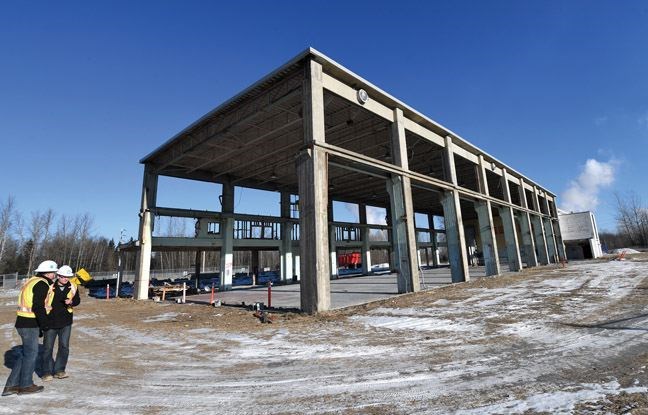BC Hydro is in the process of tearing down a building that has become a source of trouble in recent years.
Located at the end of Pickering Road, below Prince George Regional Correctional Centre, it was built in 1958 to house a diesel generating station. With completion of the WAC Bennett Dam and the accompanying powerlines in the late 1960s, the city was put on BC Hydro's grid and the station was no longer needed.
The building and the adjacent substation were decommissioned in 2013 as newer substations were put online and other than being used as a training site for RCMP dog teams, remained vacant for the most part.
"In very recent years, and as reported in The Citizen a couple years ago, it has unfortunately become a location that has been used by criminals, people who would steal copper wire, whether it was from Hydro or Telus," BC Hydro spokesman Bob Gammer said Tuesday.
"Because it's fairly secluded, they would set fires inside the building and melt the shielding off certain kinds of cable so that they could take that wire and metal and take it to a scrap dealer.
"That was becoming a problem. Despite security patrols, a locked gate and fencing, people were still determined to get in there and use that site."
In the name of safety, both for BC Hydro employees and the community at large, work began in November on demolishing the building.
The work, estimated to cost $1-2 million, hit a snag when asbestos was found in the roof. A local company, NAPP Enterprises, has been brought in to deal with the material, now considered hazardous because it causes lung cancer.
As it currently stands, the walls have been taken down, leaving the steel support beams and the roof in place. NAPP's task is to dismantle the roof, piece by piece, beginning in late March.
Once the above-ground structure is gone, the concrete on the main floor and basement will be broken up and removed. The substation is also being cleared of any remaining metal and concrete.
Gammer said the work will be completed by October at the latest and probably by sometime in the summer.
What to do with the site is still to be determined.
"One option is to sell the site and the other is to use it for some other purpose," Gammer said.
He urged the public to avoid the spot, particularly once work resumes.



